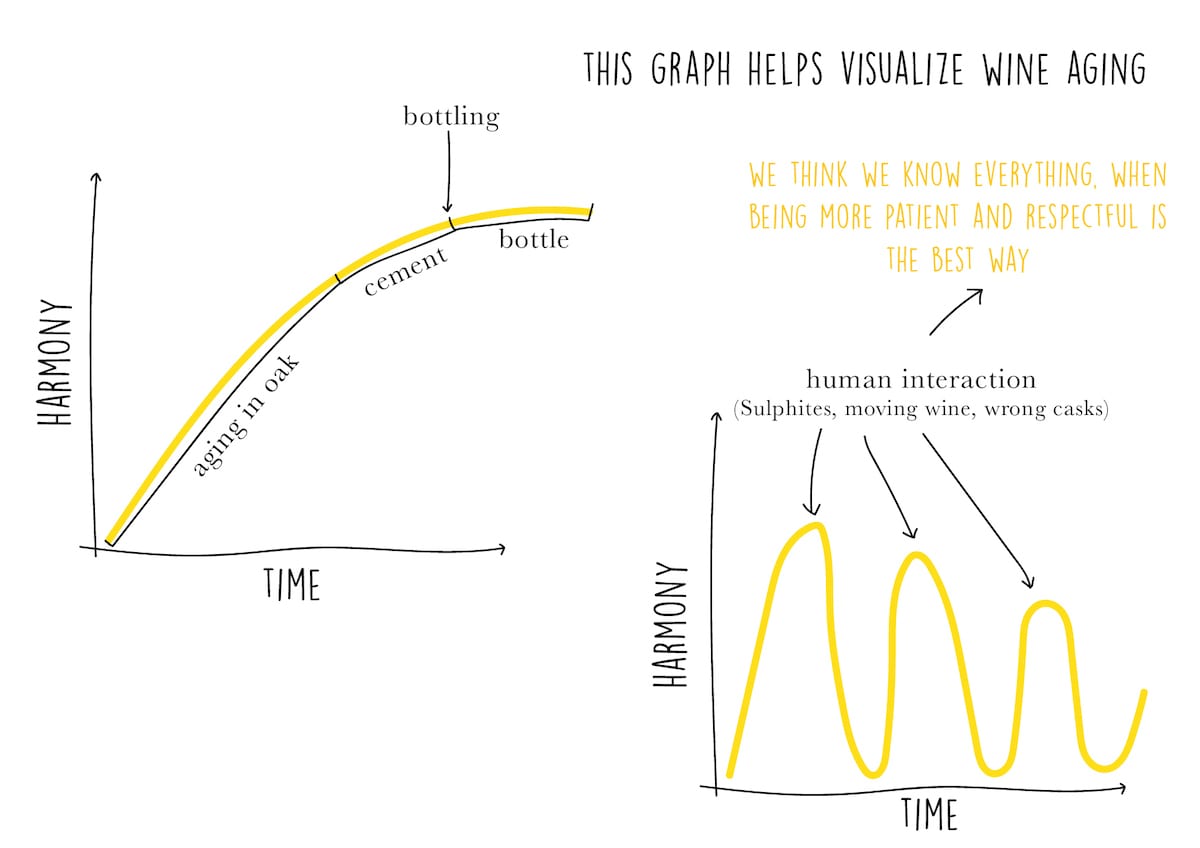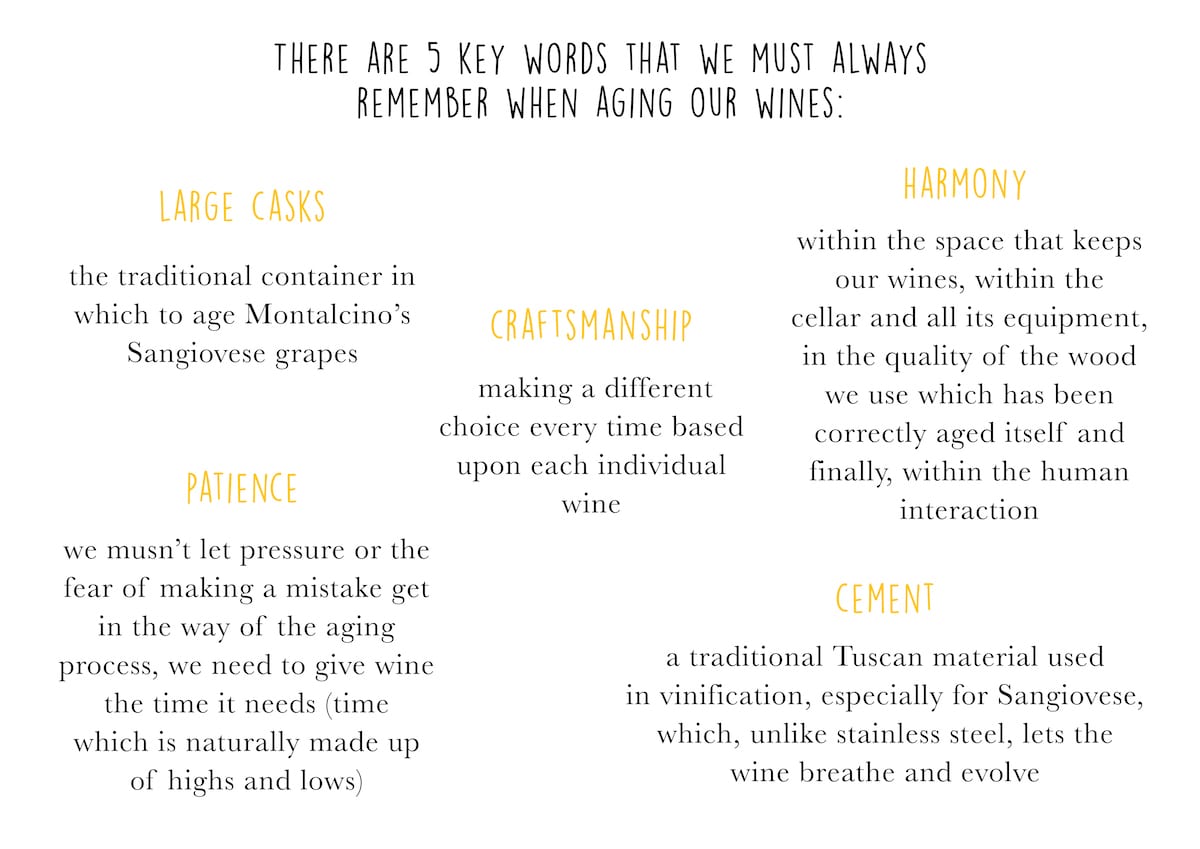Prenota una visita
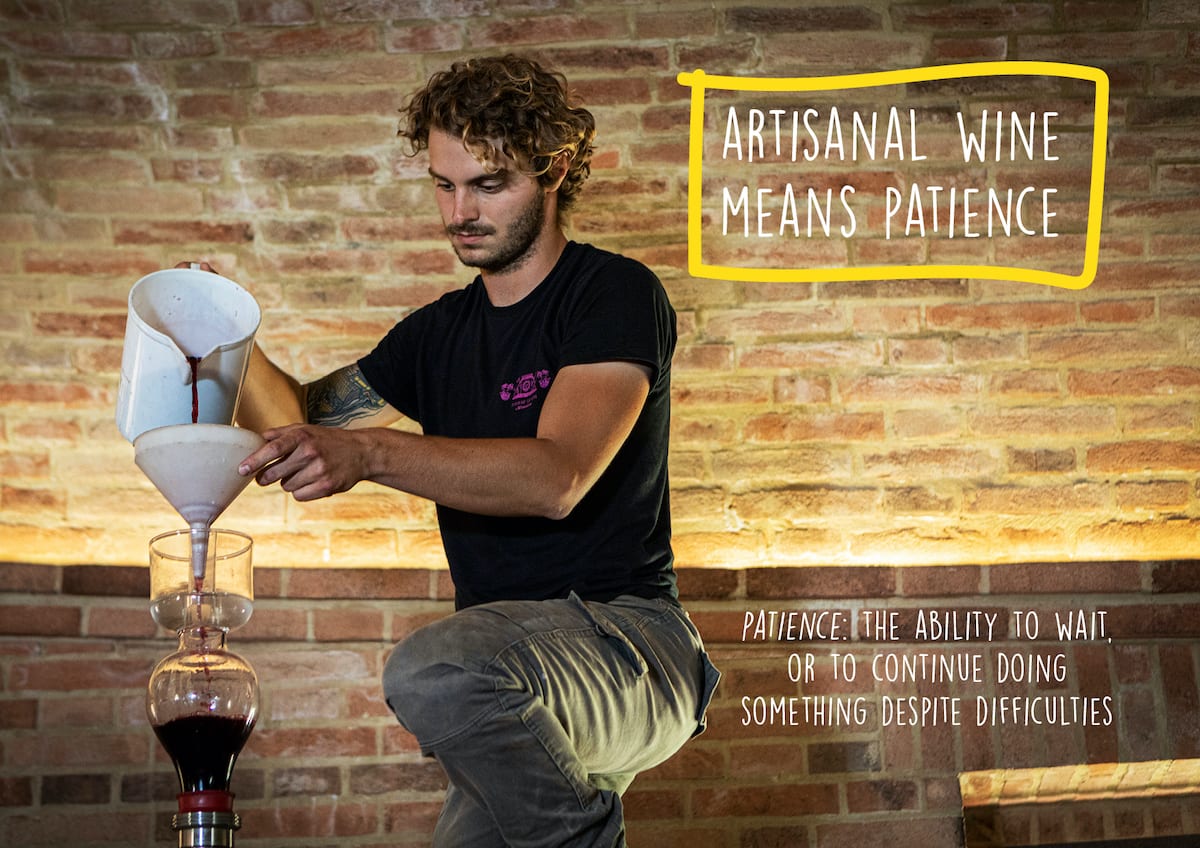
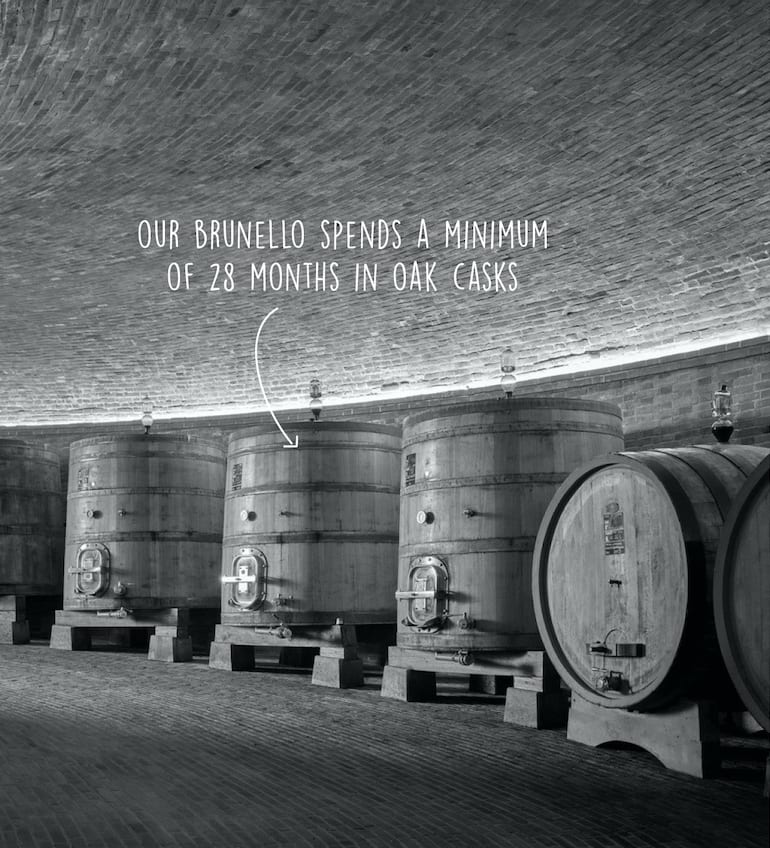
Brunello di Montalcino is one of the only appellations where aging is the most important factor. We keep our wine in the cellar for 5 years before releasing our outcome to the world, it is the longest aging period in the whole wine industry.
The disciplinary requirers that the wine spend at least 24 months in oak and 4 to 6 months in bottle, which translates into a variety of aging styles and practices, due to the fact that every winery is free to manage the remaining time as they prefer.
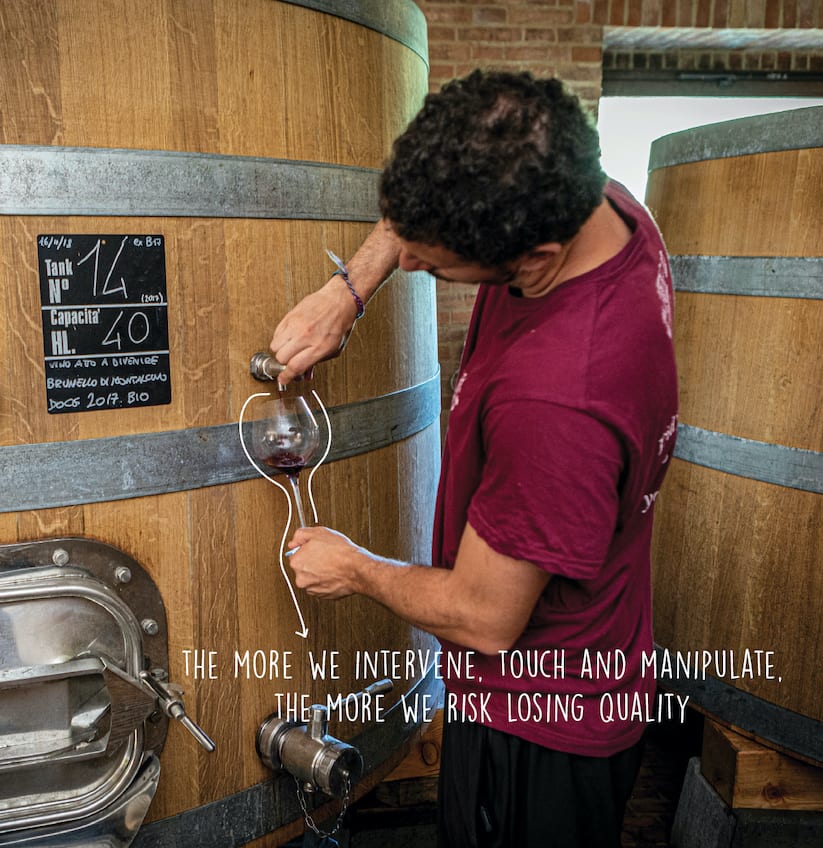
Within the cellar and vinification process man can only destroy quality, and not enhance it, as is commonly believed. If as a starting point your level of quality is 100, you can’t reach 101. If you’re a particularly skilled winemaker you might reach 95, as you are bound to destroy some level of quality.
We see ourselves as accompanying and guarding the wine rather than its creators.
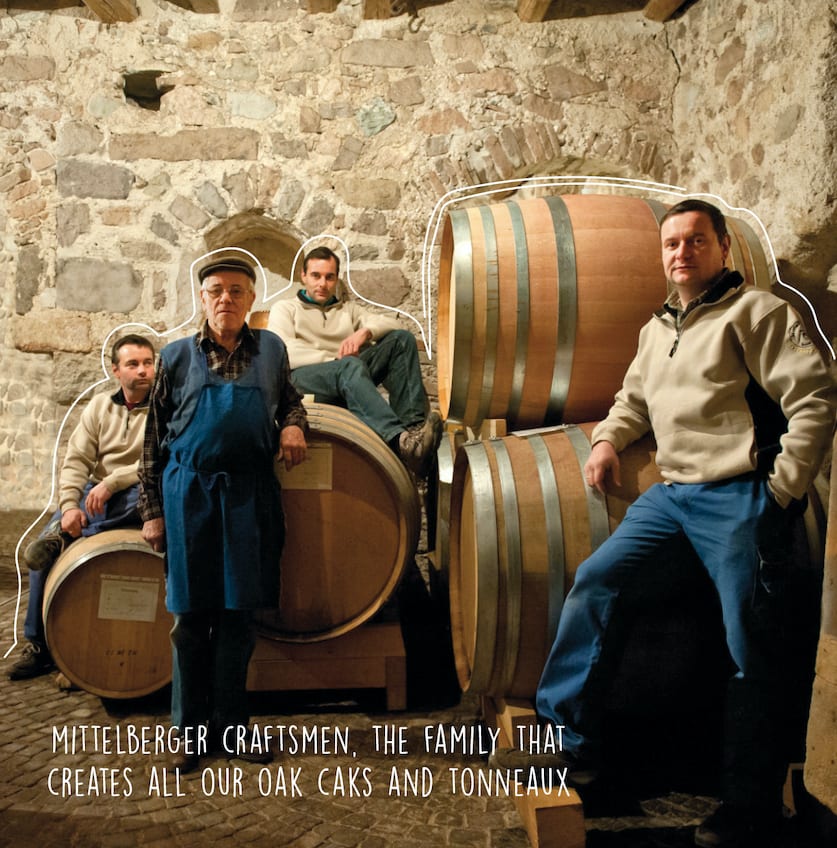
This is the only way to respect our terroir and to hope that the wine we produce can stand the test of time. Our greatest responsibility, when it comes to wine aging, is choosing the right type of wood, of the highest quality possible, from ancient forests with slow and sustainable growths, in order to have the best resistance in time.
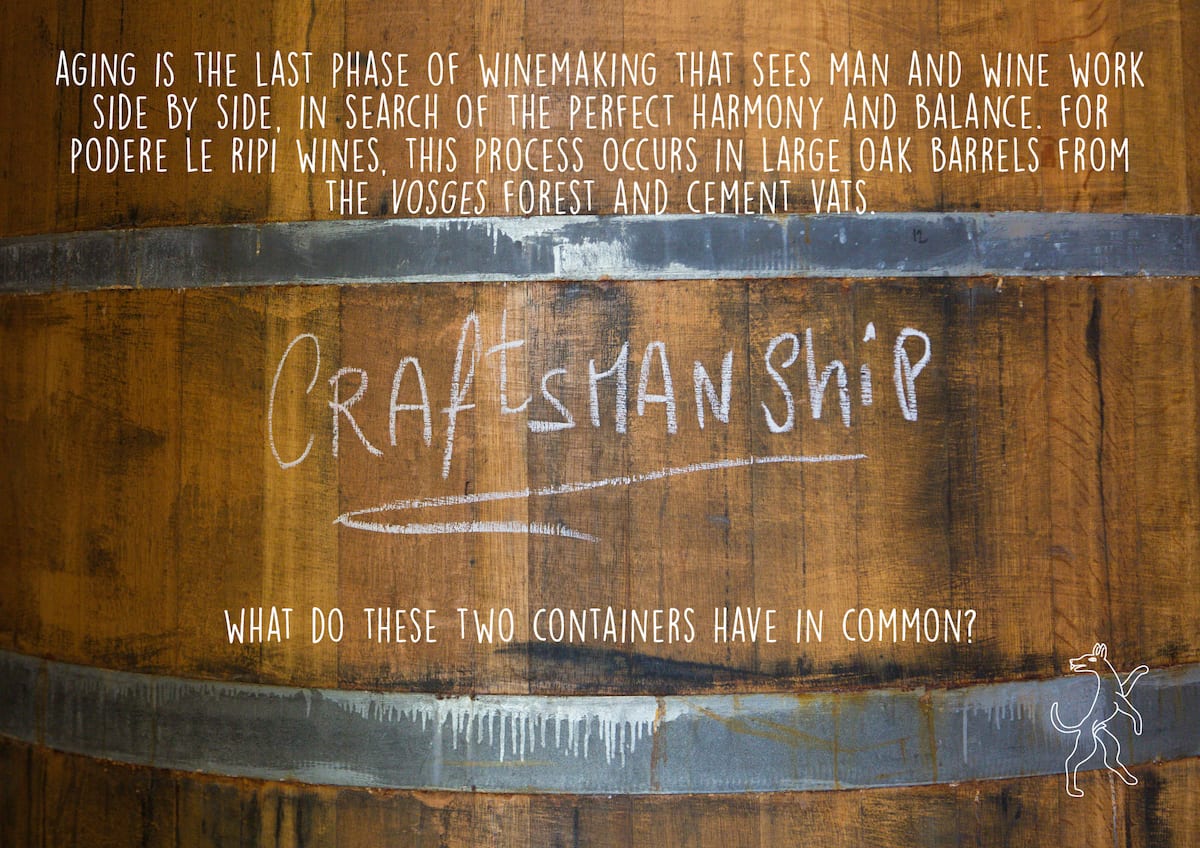

Both cement and wood allow micro oxygenation to occur in wine, wine basically breathes thanks to the porosity of these two materials.
By breathing, wine evolves positively in order to obtain a softer and more balanced taste, with aromas which are more compex. It simply reaches a perfect state of harmony.

Throughout these phases of micro oxygenation, which usually last between 18 and 48 months – depending on the wine – we have to try and “distrub” it as little as possible, and everytime we taste it, throughout its evolution, we need to think of it as a brief encounter during which to exchange a few chit chats.
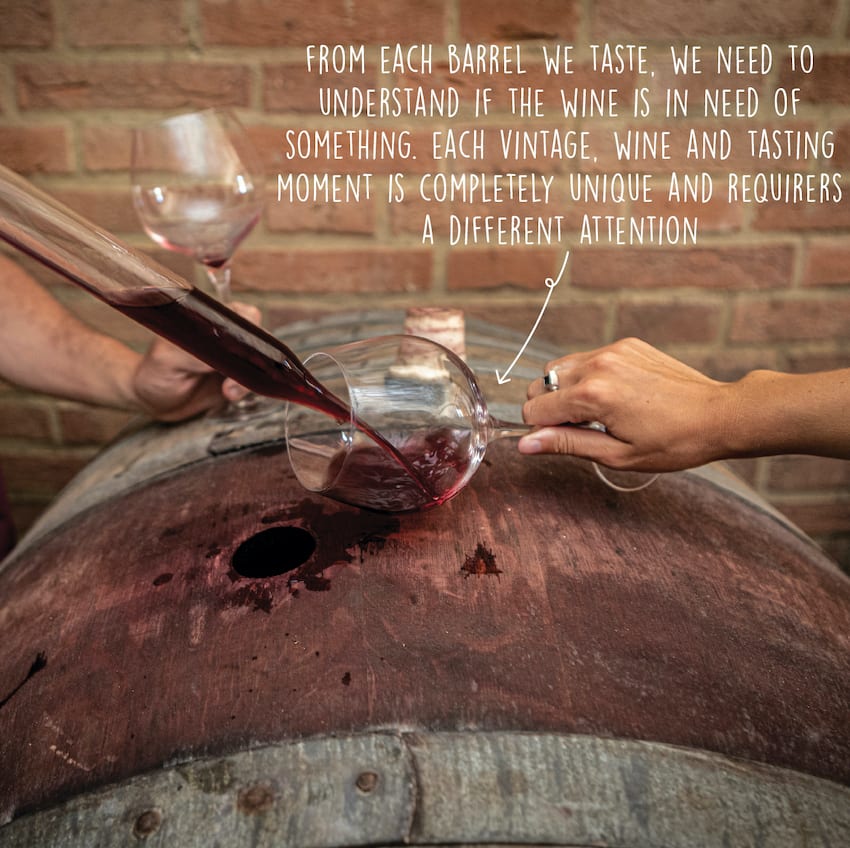
It is during the brief encounter as we taste the wine that we need to put our craftmanship skills into action.
By comprehending the wine we’ll be able to understand if it needs to be transferred to another cask so that it can separate itself from the sediment, or if it needs a bit of sulphites added, or if it is ready to be moved into the cement vats.
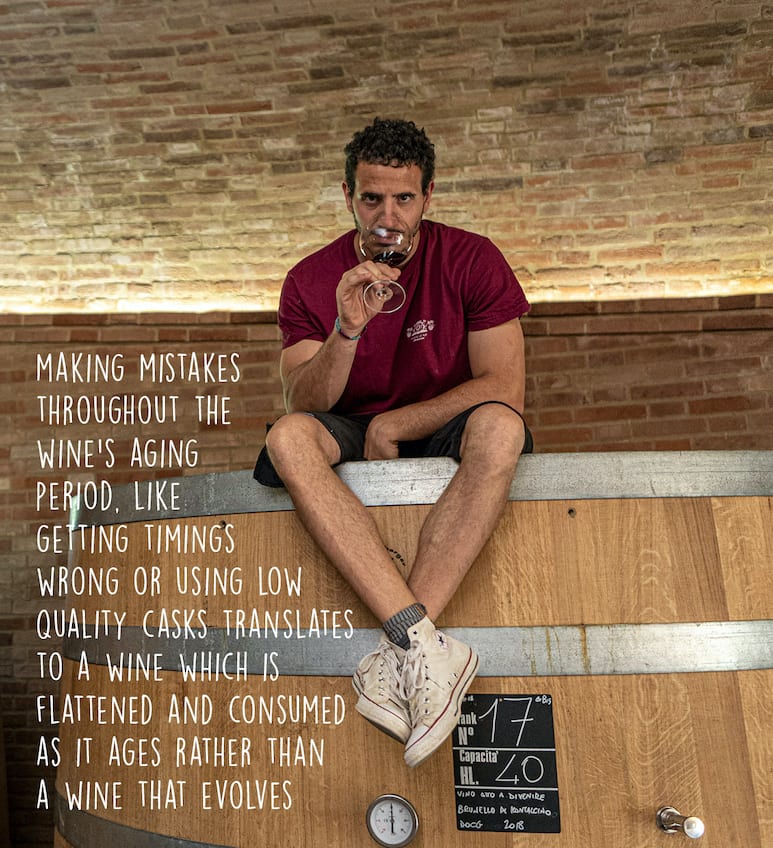
The passage from oak to cement is a delicate and decisive one, a unique moment which will determine the wine’s final result. Understanding when a vintage has completed its journey in oak and needs to slow down in cement, to relax itself and undergo a slower micro oxygenation, in order to remain fresh and lively, is the most important decision to be taken throughout the whole aging period. Brunello di Montalcino ages for such a long time, this is one of the most delicate moments there is.
